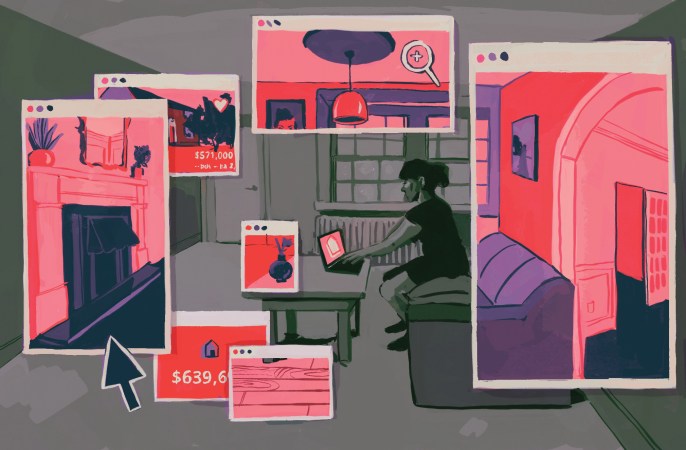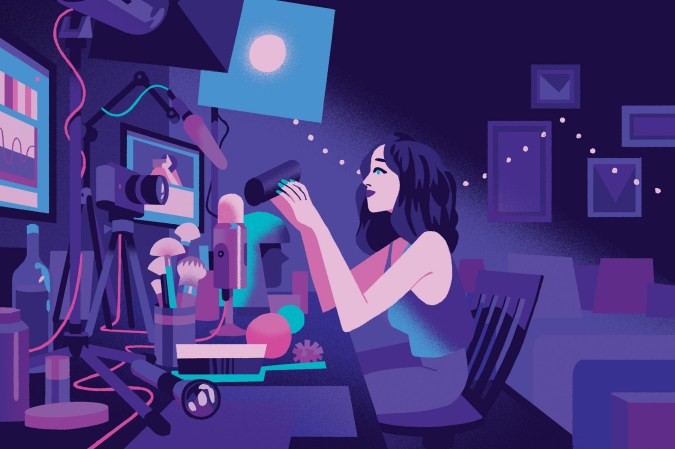

Excerpted from Wired for Love. Copyright © 2022 by Stephanie Cacioppo. Excerpted by permission of Flatiron Books, a division of Macmillian Publishers. No part of this excerpt may be reproduced or reprinted without permission in writing from the publisher.
Before I came along, only a few other researchers had tried to use the tools of neuroscience to study love. One reason for this is that it is an exceedingly difficult subject to tackle. The way the brain encoded the connection between two people was not something we could easily discover, much less measure or put into a mathematical equation. I felt a bit like Newton contemplating gravity, an invisible force that I knew existed but could not yet explain.
There was also another, more delicate, problem: skepticism from my fellow neuroscientists about whether exploring the neural basis of love was even a worthy subject in the first place.
“The neuroscience of love? Please tell me this is a joke,” sneered one of my faculty advisers in Geneva. “It’s career suicide. No one will fund you. No one will publish you.”
To him, it was almost as if I were creating the scientific equivalent of cotton candy, as if anything related to romance wasn’t sufficiently serious and substantive. He wouldn’t be the last man to tell me that love was too fluffy a topic for a serious scientist, but he was probably the most direct. And because he got to me while I was still in grad school, he had the best chance of altering my course.
“You are working so hard to get your PhD. Why would you throw it away on a subject that’s so common, so . . . simple?”
Simple? His description shocked me. The formula to make salt in chemistry is simple—one part sodium, one part chloride. The formula to make lasting love? That was way more complex. And broad-minded scientists understood that. I wish I had known then about the work of Peter Backus, an economist who had calculated that there are likely more intelligent alien civilizations in the universe than there are eligible women for him on planet Earth.
Love was anything but simple. As this adviser was talking, I was thinking of the many female social scientists who came before me, pioneers like Elaine Hatfield, Ellen Berscheid, Barbara Fredrickson, Lisa Diamond, and Susan Sprecher who had paved the way to study the psychology of love with rigor.
After politely listening to the professor’s lecture, I excused myself, gently shut the door to his office, and then whispered under my breath: “Bite me.” How could a self-respecting scientist dismiss something clearly significant to the human experience just because of how it sounded, or how it looked? Wasn’t it our job as scientists to pose the questions that other people hadn’t even thought to ask?
In his defense, there was a legitimate technical question about whether the thing that people called “love” was too vast, too unspecific, too subjective to study effectively. Was it just a compound of more basic feelings like attraction and attachment, a “secondhand emotion,” as Tina Turner once sang? Maybe “love” meant entirely different things to different people based on personality, or class, or culture? Maybe I would be better off narrowing the scope of my research?
Such a view was neatly illustrated by a grant proposal that I submitted with the word “love” in the title. It was rejected. I later sent in the same proposal, nearly word for word, with one change: I substituted “love” with “pair bonding,” and received the grant money.
While there may have been some initial hesitation among academics about the value of studying love, the popular press was very quick to embrace my work—especially around Valentine’s Day, when I got interview requests from magazines like Scientific American and National Geographic. After the first few articles, colleagues began teasingly referring to me as “Dr. Love.” The media coverage also attracted the attention of undergraduate students, who soon developed a personal stake in my research, thinking it could help them navigate their own budding campus romances.
By 2006, I had moved from Geneva to Dartmouth College in New Hampshire, where I was doing research in the department of psychological and brain sciences with the world-renowned neuroscientists Scott Grafton and Michael Gazzaniga. A new language, a new culture, a new climate—I was lost until I found my way into the laboratory where they kept the brain scanners and computers and I could spend my nights and weekends poring over data.

Very often, during office hours, a female student would show up at my door with a special request. Usually, she had a friend or two with her for support. She had heard about my work from the flyers I put up in the library: wanted: women in love.
After a tentative knock on my office door, I heard some awkward throat clearing. “Excuse me, uhhh, Stephanie . . . do you have a minute for a chat?”
While I could write scientific papers in English, I was still learning the everyday language, and the word “chat” threw me, since in French it means “cat.” But I got the sense that she wanted to talk.
“Please, have a seat.”
The student sat down, dug her hands into her jean pockets, and began to blush. Her friends gave her a nudge.
“Go on, just ask!”
“OK!” she said, before turning to me to make a request I would hear over and over again that year: “Do you think I could use your Love Machine?”
On my patent application I actually called it a “System and Method for Detecting a Specific Cognitive-Emotional State in a Subject,” but the students preferred “Love Machine,” so that was the name that stuck. It was a 10-minute computer-based test that I designed, which, the students believed, could help them make up their minds when deciding between two potential romantic partners. If a student was torn between the popular guy with a six-pack and the awkward geek with an endearing smile, this program seemed to be able to peer into her heart and divine which guy (or gal) she truly liked.
I had not set out to develop a dating gizmo for undergrads. After my experience in Geneva studying patients like Huguette, I wanted to test the power of positive emotions on the brain in a systematic way. Huguette had used her love of painting to overcome the brain damage caused by a massive stroke. I saw how the associations she had formed with this beloved vocation literally improved the function and plasticity of her mind. The results of our work together were impressive, but ultimately anecdotal—like any patient’s case history.
I wanted to see whether her experience and similar ones I observed with other patients in the neurology ward weren’t isolated incidents but rather illuminated some general feature of the brain. I wanted to see whether positive emotional stimuli like love and passion (for a sport, for instance) could improve brain functioning in all people.
Most of the neuroscientists I knew had focused their interest on the opposite side of the emotional spectrum—the Dark Side. Much research had been done, including by some of my colleagues in Geneva, on how negative stimuli sped up the reaction times of certain brain regions. Subconscious priming experiments were conducted where patients were flashed an image of a snake or a spider at a speed that was too fast for people to consciously register but not too fast to escape notice by the amygdala, a brain region that is exquisitely attuned to threats.
Derived from the Greek word meaning “almond”—because of its small, oval shape—the amygdala is buried beneath the cerebral cortex in one of the most ancient parts of the brain, the limbic system, and is designed to receive and act on information about threats blazingly fast, long before such information reaches our consciousness. From an evolutionary standpoint, being alert to a negative stimulus makes perfect sense. If I am an early human foraging in the jungle, I need to be able to rapidly discern whether that long, dark object lying on the forest floor is a twig—or a snake. I need also to be able to see a person in the brush and detect that he is a stranger with hostile intent, so I can run away.
This evolutionary response happens through what the neuroscientist Joseph LeDoux calls a “low road”—a direct emotional pathway designed to elicit defensive responses without conscious thought. It is like an expressway connecting the visual input of the threat from your eyes to the amygdala, triggering the hypothalamus to turn on the “fight-or-flight response,” the body’s self-defense mode.
All this occurs in the blink of an eye—or about a hundred milliseconds—which is preconscious. (Conscious thought processes kick in at about three hundred milliseconds, or a third of a second.) That’s why you might flinch or jump or raise your arm to a threat almost automatically, before you even perceive what it is you’re responding to.
The function of the amygdala was perhaps most dramatically illustrated by the neuroscientist Ralph Adolphs’s patient S.M., whose amygdala had been destroyed because of a genetic disorder. As a consequence, she could not experience any fear. Incidentally, this was a frightening state of affairs for S.M., since without the ability to detect threats she could not steer clear of dangerous situations, which explains in part why she was the victim of several violent crimes.
Yet as much as the amygdala registers fear, it really is out to detect saliency, changes in the environment that are worth noticing. The brain, as a general rule, is wired to detect change. Typically, when a situation is stable it is safe. When it is rapidly changing, not so much. This is why the amygdala is famous as a threat detector when, in fact, it picks up on all kinds of changes, positive or negative.
I once conducted a study with epileptic patients who had electrodes implanted into their amygdalae. They were flashed subliminal messages of both negatively and positively charged emotional words. As predicted, the negative words triggered the amygdala’s famed threat detector, but what was fascinating to me was that the positive words also triggered the amygdala—just not as quickly. (And by “not as quickly” I mean a difference of a few hundredths of a second.)
The results suggested that, just as we are hardwired to detect and react to danger, we are also hardwired to respond to the opportunity for positive experiences, things we don’t want to move away from but toward. The need for love might be less immediate than the need to avoid danger, but it is by no means a luxury. As we’ve learned, humans evolved because of love, and we evolved to love. So perhaps love had its own ancient pathway—another one of LeDoux’s “low roads”—to the brain.
Frequently, it is our unconscious preference (“what the heart wants”) that will make us happiest.
The “Love Machine” was designed to find out if this was true. Here’s how it worked: A participant, say the student who visited me that day at Dartmouth for dating advice, would supply the program with the names of the two people she was interested in. Let’s say: Blake and Shiloh. Then the test would begin. Her screen would flash. She could see the flash but could not detect that she had just been subliminally primed with the name of Date #1, Blake, which appeared on the screen for twenty-six milliseconds. That is not enough time for the brain to consciously perceive the word, yet it is enough time to relay a subliminal message that activates the amygdala and triggers whatever emotions are associated with the name Blake.
Once this subliminal association is triggered, the participant then completes a series of lexical tasks—sorting out real words from fake ones. By carefully tracking her response times, we can measure tiny differences that statistical analysis revealed to be significant—and meaningful. When the student was primed with Date #1, Blake, she recognized the real words almost 20 percent faster than when primed with Date #2, Shiloh. And randomizing the order—so that Shiloh appeared first—still showed the same speedy reaction to Blake.
But did this necessarily mean that she had an unconscious preference for Blake? What if, instead, she preferred Shiloh and the positive associations triggered by that name actually distracted her from the lexical task, making Blake only seem like the favored date? To eliminate this possible confound, I also conducted a “Love Machine” experiment on women who declared that they were madly, deeply in love with their partner. I put the names of the women’s partners in the Love Machine along with those of a friend whom they had known for the same amount of time as their beloved. This would ensure that their brain was not simply responding to the familiarity of one name over the other. The result: People performed significantly better on the lexical task after being primed with the name of the person they undoubtedly loved.
Now my question was why. Why was this happening? Why should love improve how quickly a person can read? I guessed that it had to do with the way the brain is interconnected. When the name Blake flashed before the student’s eyes and excited neurons in the brain because of the name’s positive associations, it activated the brain’s “reward” system. As the chemical messenger dopamine poured out from several areas, including the ventral tegmental area and the hypothalamus, it sent a rush of joyous energy coursing through not only the regions that process blissful feelings but also other connected areas, like those that help us parse written language. The student didn’t decide for any of this to happen—the reaction and its effects were not something within her will or control or even conscious knowledge. The test, in other words, revealed her true feelings, her genuine preference, the fact that her brain had made positive associations with Blake that did not exist for Shiloh. A colleague summarized the upshot of the study this way: “I guess, ‘When you know, you know—even when you don’t know.’”
The question then became: Why were these feelings inscrutable to her? Why did she need the “Love Machine” to unlock them? This program actually worked similarly to an implicit association test (or IAT), which measures whether people have an unconscious bias favoring one gender or race, for example, over another. Such tests can reveal feelings that are buried deep within—those that you might wish to conceal, even from yourself.
Yet, just like the research my colleagues in Geneva were doing on negative emotions, these tests are typically focused on the Dark Side, unpleasant unconscious reactions, the kinds that are involved in discrimination. Bias is something we need to control and root out. But love is something that we often need to set free. Frequently, it is our unconscious preference (“what the heart wants”) that will make us happiest. As Blaise Pascal put it, “the heart has its reasons that the reason does not know.”
The problems, the Romeo and Juliet–style drama, usually occur when something gets in the way. Interestingly, when I told the students their results, the response was often some variation of “I knew it!”
“So why did you need the Love Machine?!”
Most students, if they were honest with themselves, had a gut feeling about which guy or girl to go with, but their frontal lobes— which include regions that act like “parents” in the brain, telling us “don’t do that”—were standing in the way.
The student sitting in my office would feel a sense of empowerment when she learned that the Love Machine had confirmed her gut feeling. I gently reinforced this feeling and reminded her that the decision to act—or not—on that news flash from her brain was hers, and only hers. She smiled, and walked away from our session with a triumphant attitude—chin up, her two girlfriends following behind.















